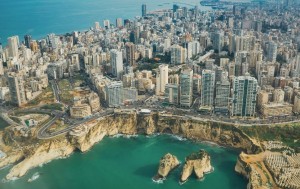The explosion at the Port of Beirut in August 2020 was devastating for the city, destroying approximately 40% of the buildings and claiming hundreds of lives. Properties several kilometres from the site, including the airport (10km away), were affected. Overall, the tragedy was responsible for displacing over 300,000 people. In the years since, there has been work to start reconstruction. UNESCO recently gave details of new programmes to restore key commercial architecture, heritage buildings, schools, and other key properties.
Background
 The catalyst for the explosion was 2,750 tonnes of ammonia nitrate. It was the cargo of a ship that was stopped in Beirut in 2014 and then declared unseaworthy. Ultimately, the bags of ammonia nitrate went into storage at Warehouse 12.
The catalyst for the explosion was 2,750 tonnes of ammonia nitrate. It was the cargo of a ship that was stopped in Beirut in 2014 and then declared unseaworthy. Ultimately, the bags of ammonia nitrate went into storage at Warehouse 12.
A fire began at the warehouse on 4th August 2020. There was an initial explosion just over 20 minutes later as the fire got to a store of fireworks. Less than a minute later, the ammonia nitrate exploded. It was one of the biggest non-nuclear explosions in history, with the impact felt over 240km away in neighbouring countries.
The force of the explosion did a huge amount of damage. It destroyed housing and historic neighbourhoods, hospitals, schools, and countless other buildings. The loss of such a huge piece of the cultural and economic landscape of Beirut, one of the oldest cities in the world, was awful.
Rebuilding
Over five years later, there is still a really long road to rebuild Beirut, including homes, commercial architecture, and more. UNESCO is leading the charge to help with the restoration of significant cultural assets. Just last month they gave details of the three latest programmes, focusing on some of the most important properties.
The first focus of the latest project is the former Mar Mikhael train station. It was once a vital piece of the city’s infrastructure, connecting continents. Sadly, it closed in 1975 and was damaged in the explosion. Now work can begin to transform it into a cultural venue and public space. The goal is for it to open in 2027.
The second project is to restore the Grand Theatre, one of the city’s key landmarks. This is another big project because it has been unused for decades and was also damaged by the explosion. Work will stabilise it and allow a full restoration. In the future, plans are to use it to host a massive cultural programme.
Finally, there will be funding for several projects in Tyre and Baalbek. The two ancient cities are UNESCO world heritage sites. They have a rich history, with significant architecture and cultural value. So, it’s fantastic to see work continuing to restore them.
Speak to us about commercial architecture
It’s fantastic to see all the progress to rebuild and preserve Beirut. UNESCO has been a leading light, supporting restoration of assets like the Sursock Museum and Sursock Palace. They’ve also been a big part of the coordination to restore schools and other institutions.
Coffey Architects appreciates the key dynamic in cities; they are a product of the people. You see the resilience and drive to preserve culture and history when tragedies happen. The resurrection of homes, commercial architecture, institutions, and public spaces is incredible.
If you’re thinking about a project and want some help, we’d love to work with you. We’ve got a great portfolio, including offices, galleries, and homes. We can also work with heritage properties to give them a brighter future and preserve the history. Call today or browse our website.